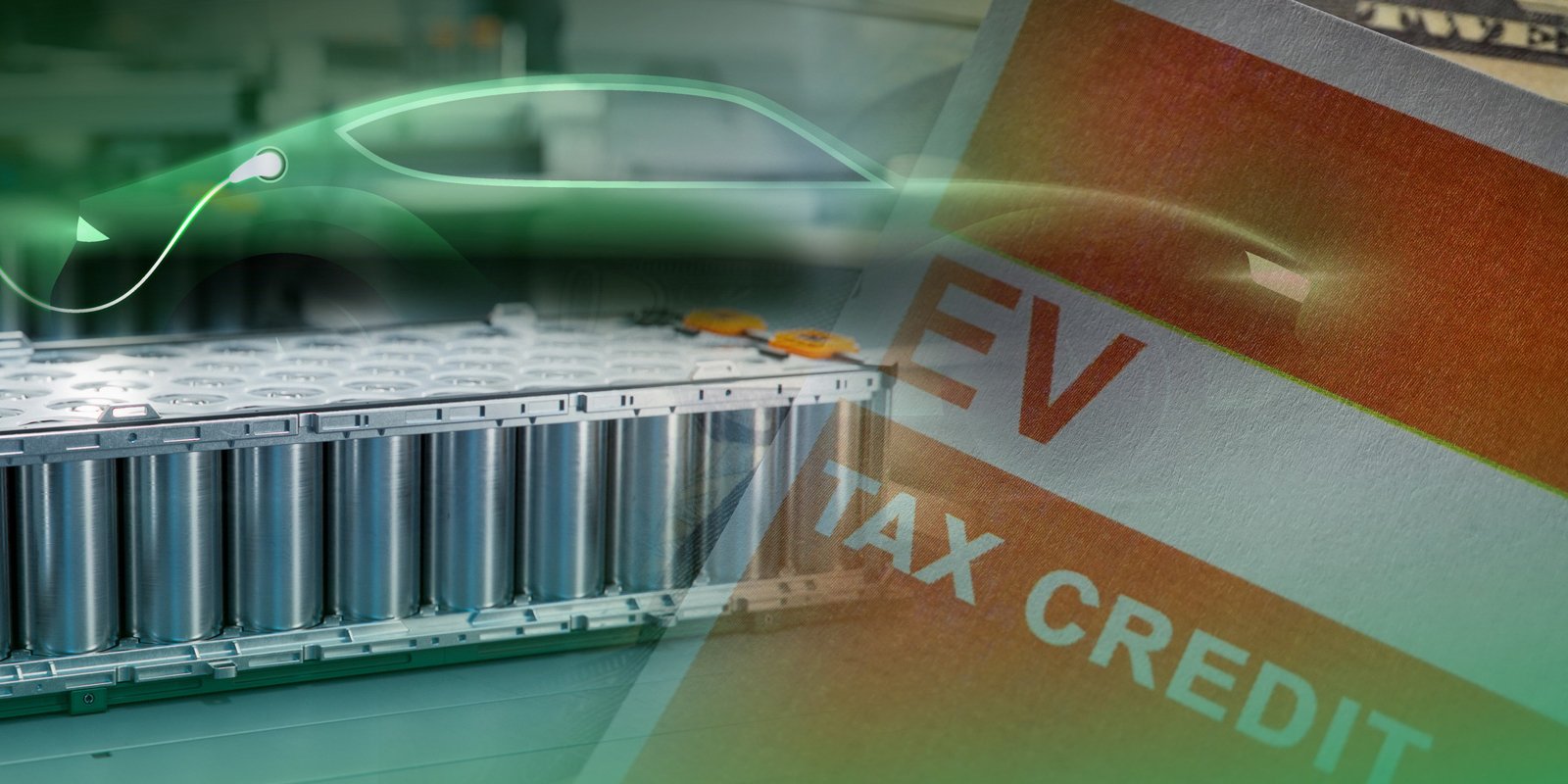
Proposed Guidance Clarifies "Foreign Entity of Concern" Restrictions for Clean Vehicle Credit
In Short
The Situation: Clean vehicles cannot qualify for the Clean Vehicle Tax Credit if a foreign entity of concern ("FEOC") took part in the production of the vehicle's battery or battery components, including critical minerals.
The Proposed Guidance: Newly proposed Treasury and Department of Energy Guidance would clarify the definition of "FEOC."
Looking Ahead: This proposed guidance will allow manufacturers of clean vehicles to plan how to make their vehicles eligible for the Clean Vehicle Tax Credit in light of the prevalence of non-U.S. entities in the battery supply chain. The proposed guidance remains subject to change, but taxpayers generally may rely on the proposed guidance until it is finalized.
New proposed Treasury and Department of Energy ("DOE") guidance, issued on December 1, 2023, offers clarity on which vehicles will be disqualified from the Clean Vehicle Tax Credit due to the inclusion of minerals or components sourced from an FEOC. The Inflation Reduction Act of 2022 (the "IRA") revised the Clean Vehicle Tax Credit in Section 30D of the Internal Revenue Code to, among other things, include restrictions on the involvement of FEOCs in the electric vehicle battery production supply chain. The restrictions are intended to enhance battery production capabilities within the United States while also preventing certain foreign nations from benefitting from the tax credits. The newly proposed guidance aims to specify which entities are FEOCs and to allow manufacturers to determine which vehicles are FEOC-compliant.
Background
As amended by the IRA, the Section 30D Clean Vehicle Tax Credit provides a consumer credit of up to $7,500 per qualifying clean vehicle. The credit consists of a $3,750 credit if certain battery component requirements are met and another $3,750 if certain critical mineral requirements are met.
However, a vehicle will not qualify for the credit if the vehicle's battery does not comply with the FEOC restrictions. For any vehicle placed in service after December 31, 2023, the vehicle is ineligible for the Clean Vehicle Tax Credit if any of the components contained in the vehicle's battery were manufactured or assembled by an FEOC. For any vehicle placed in service after December 31, 2024, the vehicle is ineligible for the credit if any applicable critical minerals contained in the battery were extracted, processed, or recycled by an FEOC.
Guidance Defining FEOCs
"FEOC" is defined by statute to include a "foreign entity" that is "owned by, controlled by, or subject to the jurisdiction or direction of a government of a foreign country that is a covered nation" (which includes China, Iran, North Korea, and Russia). Treasury and the DOE have proposed three tests for determining whether a "foreign entity" is an FEOC. For this purpose, a "foreign entity" includes not only entities organized in foreign jurisdictions, but also their 25% or greater owned (or otherwise controlled under the tests below) U.S. subsidiaries (although such subsidiaries are not necessarily themselves FEOCs). Furthermore, a "government of a foreign country" includes agencies and instrumentalities, political parties, and current or former senior political figures.
Jurisdiction Test. The Jurisdiction Test is met if either: (i) the foreign entity is incorporated or domiciled in, or has its principal place of business in, a covered nation; or (ii) the foreign entity engages in the extraction, processing, or recycling of critical materials or the manufacturing of battery components in a covered nation. So, for example, an entity organized in China is an FEOC even if not affiliated with the Chinese government or even owned by Chinese nationals (e.g., a Chinese wholly owned foreign enterprise would seem to qualify as an FEOC).
25% Control Test. The 25% Control Test is met if a covered nation government controls 25% or more of a foreign entity's board seats, voting shares, or equity interests, whether directly or indirectly via one or more intermediate entities.
In determining the level of indirect ownership, any equity interests owned by a majority-owned subsidiary are treated as fully owned by that subsidiary's parent. For example, if Entity A owns at least 50% of the voting shares of Entity B, and Entity B owns 100% of the voting shares of Entity C, then Entity A is treated as owning 100% of the voting shares of Entity C for purposes of the 25% Control Test. However, if an entity owns less than 50% of a subsidiary, the parent will be attributed only a proportionate share of the subsidiaries' control over lower-tier entities.
Suppose that a Chinese entity establishes a wholly owned U.S. subsidiary. Even though the Chinese entity would be an FEOC (under the Jurisdiction Test), the subsidiary is not necessarily itself an FEOC. If the Chinese government does not hold any direct or indirect interest in the Chinese parent company's voting shares, equity interests, or board seats, then the 25% Control Test does not cause the U.S. subsidiary to be an FEOC.
Contractual Control Test. The Contractual Control Test is targeted at arrangements whereby covered nation governments might not hold an ownership interest in an entity, but might seek to control production activities through contractual agreements. The test is satisfied if a licensing agreement or another contract allows an FEOC to exercise "effective control" over the extraction, processing, recycling, manufacturing, or assembly of critical minerals, battery components, or battery materials.
The application of the Contractual Control Test will depend on a detailed analysis of particular contract provisions. Fortunately, the DOE's proposed guidance contains a safe harbor for avoiding "effective control" by a foreign entity. A contractual relationship will not be deemed to confer effective control if five specifically enumerated rights are reserved to the benefit of one or more entities that are not FEOCs. Generally, these include: (i) the right to determine quantities produced; (ii) the right to determine timing of production; (iii) the right of non-FEOCs to use the minerals or components or sell them to other entities of their choosing; (iv) the right to access and observe production; and (v) the right to operate, maintain, and repair critical equipment and access and use critical intellectual property, information, and data.
Verifying FEOC-Compliance
The proposed Treasury regulations also contain guidance on how FEOC status is to be verified. Key to the verification process are vehicle manufacturers that have entered (or will enter) into reporting agreements with the Treasury Secretary related to the Clean Vehicle Tax Credit. These manufacturers are known as "qualified manufacturers." After the IRA, the only vehicles that are eligible for the Clean Vehicle Tax Credit are those made by qualified manufacturers.
Under the proposed Treasury regulations, qualified manufacturers must conduct FEOC-related due diligence in accordance with industry standards for tracing the origin of battery materials. (The proposed Treasury regulations were also accompanied by newly issued Revenue Procedure 2023-38, which consolidates the available guidance for qualified manufacturers.) Diligence is generally required with respect to all battery components and applicable critical minerals to determine whether these items are FEOC-compliant.
For purposes of these diligence requirements, whether an entity is an FEOC is determined as of the time of the entity's performance of the relevant activity. For critical minerals, relevant activities include extraction, processing, or recycling. The determination of whether an applicable critical mineral is FEOC-compliant is determined at the end of processing or recycling of the applicable critical mineral into a constituent material (i.e., materials directly employed in the manufacturing of battery components), taking into account all applicable steps through and including final processing or recycling. If any one of these activities is performed by an FEOC, then the critical minerals are not FEOC-compliant. For battery components, relevant activities are manufacturing and assembly. If either manufacturing or assembly is performed by an FEOC, the battery component is not FEOC-compliant.
Beginning in 2025, qualified manufacturers will be required to submit a "compliant-battery ledger" to the IRS estimating the number of compliant batteries, as well as periodic written reports, which will result in adjustments to the ledger. These submissions must be accompanied by attestations, certifications, or documentation sufficient to establish FEOC compliance, and the IRS, in conjunction with the DOE, will review the evidence supplied.
Next Steps
Comments on the proposed regulations and requests for a public hearing were due by December 29, 2023. Taxpayers may rely on the proposed regulations for vehicles placed in service prior to their finalization, provided the taxpayer follows the proposed regulations in their entirety and in a consistent manner.
Four Key Takeaways
- The U.S. subsidiary of an FEOC is not necessarily itself an FEOC under the proposed Treasury and DOE guidance, as long as a covered nation government does not indirectly control the U.S. subsidiary (generally, a 25% ownership threshold).
- A U.S. entity may be classified as an FEOC by virtue of contractual arrangements with existing FEOCs that provide such foreign entities effective control over certain aspects of the production process.
- To avoid gaining FEOC status via contract, manufacturers should strongly consider complying with the DOE's proposed safe harbor by ensuring that non-FEOCs reserve certain rights related to battery production.
- Manufacturers wishing to take advantage of the Clean Vehicle Tax Credit will need to engage in detailed verification and tracking procedures to ensure that their batteries and vehicles are FEOC-compliant.








